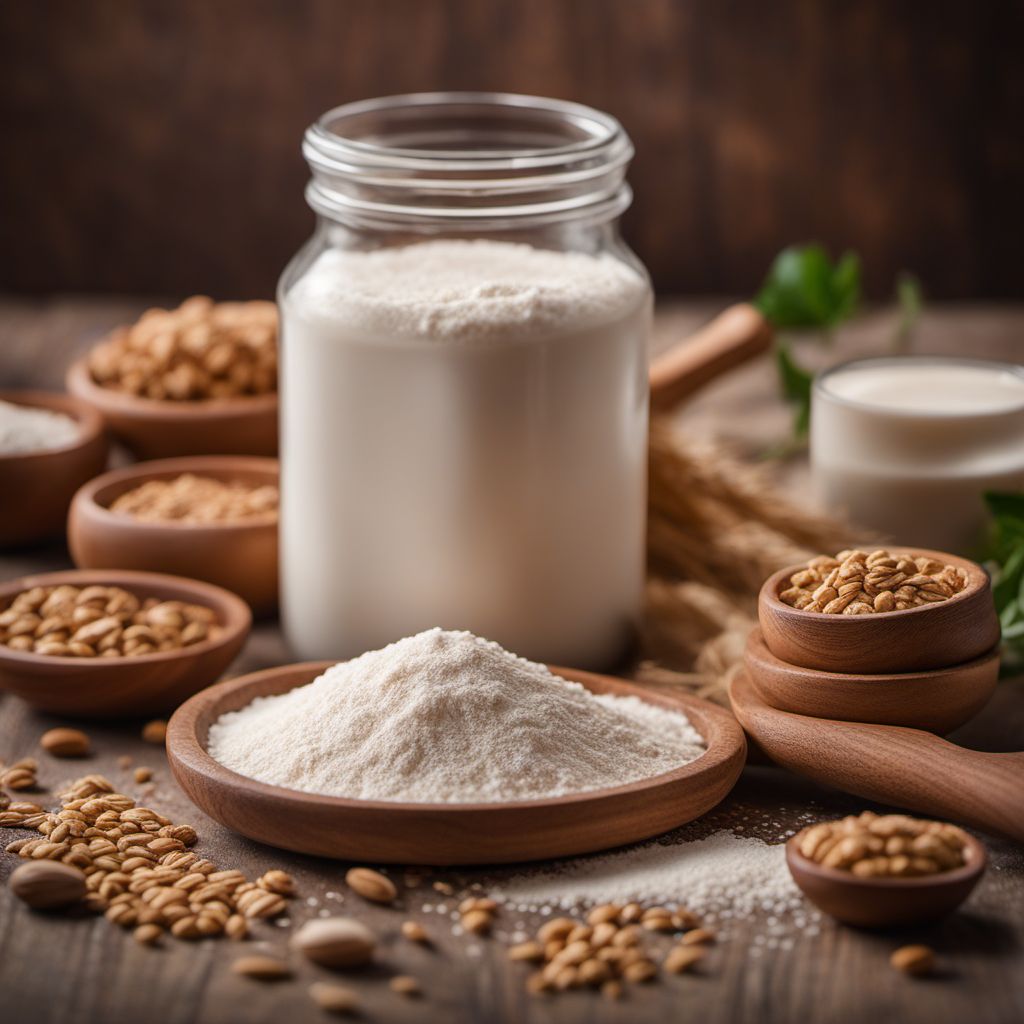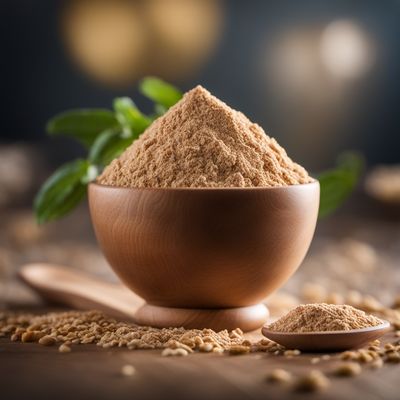
Ingredient
Spelt flour, medium
The Ancient Grain Flour with a Nutty Twist
Spelt flour, medium, is milled from the ancient grain spelt, which has been cultivated for thousands of years. It has a slightly sweet and nutty flavor, making it a popular choice for baking bread, pastries, and other baked goods. The flour has a light and airy texture, resulting in tender and moist finished products.
Origins and history
Spelt, an ancient grain, originated in the Fertile Crescent and was widely cultivated in Europe during the Bronze Age. It was a staple in many ancient civilizations, including the Greeks and Romans. Over time, spelt fell out of favor due to the rise of modern wheat varieties but has recently experienced a resurgence in popularity due to its unique flavor and potential health benefits.
Nutritional information
Spelt flour, medium, is a good source of dietary fiber, protein, and essential minerals such as manganese and phosphorus. It is also lower in gluten than traditional wheat flour, making it a potential alternative for individuals with mild gluten sensitivities. However, it is not suitable for those with celiac disease or severe gluten allergies.
Allergens
Spelt flour may contain gluten, which can trigger adverse reactions in individuals with celiac disease or gluten allergies. It is important to read labels carefully and look for certified gluten-free alternatives if necessary.
How to select
When selecting spelt flour, medium, opt for organic or locally sourced varieties whenever possible. Look for flour that is finely ground and has a light golden color. Avoid flour that appears dull or has a rancid smell, as it may indicate poor quality or improper storage.
Storage recommendations
To maintain the freshness and quality of spelt flour, medium, store it in an airtight container in a cool and dry place, away from direct sunlight. Refrigeration or freezing can extend its shelf life, especially in warmer climates or if you plan to store it for an extended period.
How to produce
Spelt is a hardy grain that can be grown in a variety of climates. However, it requires specific conditions, including well-drained soil and moderate temperatures. While it is possible to grow spelt at home, it is recommended to leave large-scale production to professional farmers.
Preparation tips
Spelt flour, medium, can be used as a substitute for all-purpose or whole wheat flour in a variety of recipes. It is particularly well-suited for baking bread, muffins, cookies, and pancakes. When using spelt flour, it is advisable to increase the liquid content slightly to compensate for its lower gluten content and absorbency.
Substitutions
Whole wheat flour, all-purpose flour, or a combination of the two can be used as substitutes for spelt flour, medium. However, keep in mind that the flavor, texture, and nutritional profile may differ from the original recipe.
Culinary uses
Spelt flour, medium, is commonly used in artisanal bread-making, where its nutty flavor and light texture shine. It is also a popular choice for baking pastries, cookies, and muffins. Additionally, spelt flour can be used to thicken sauces or as a coating for fried foods, adding a unique twist to familiar dishes.
Availability
Spelt flour, medium, is widely available in health food stores, specialty grocery stores, and online retailers. It is more commonly found in regions where ancient grains and alternative flours are in demand, such as North America, Europe, and Australia.

